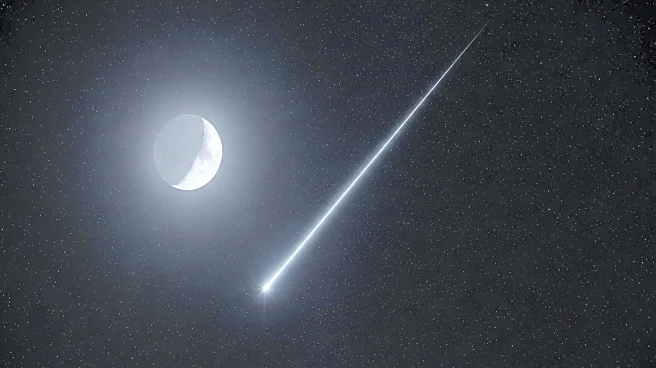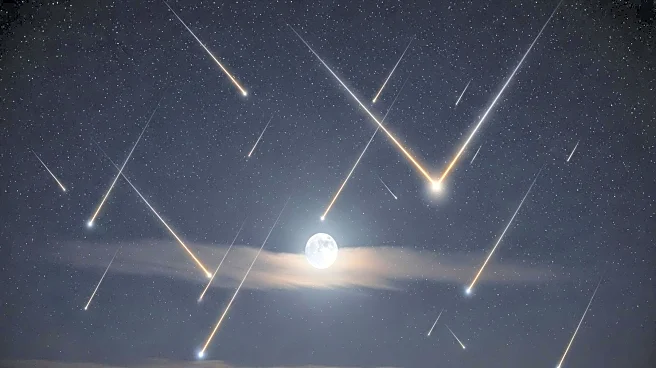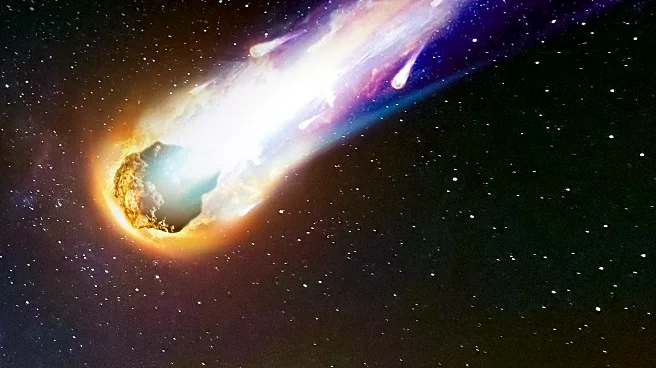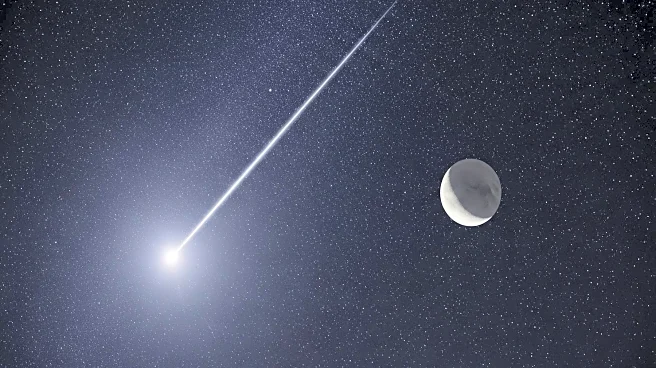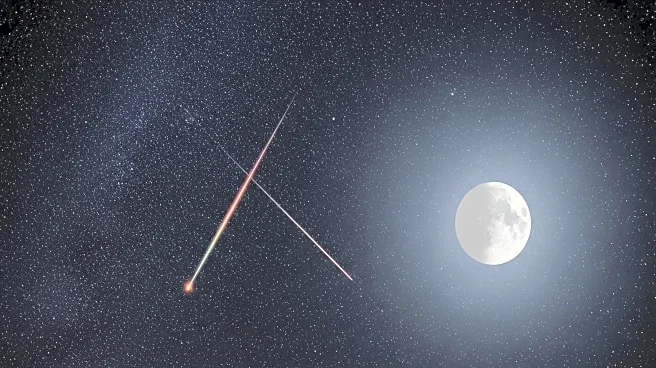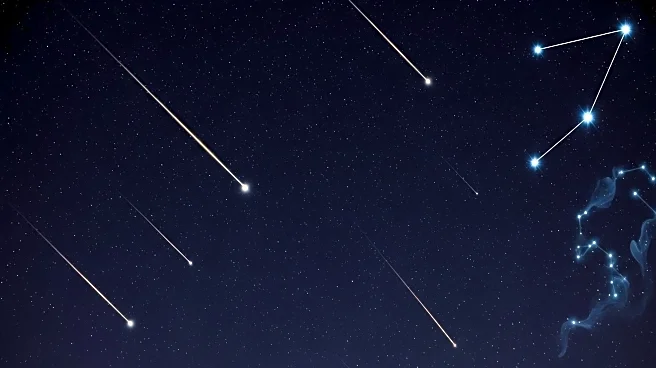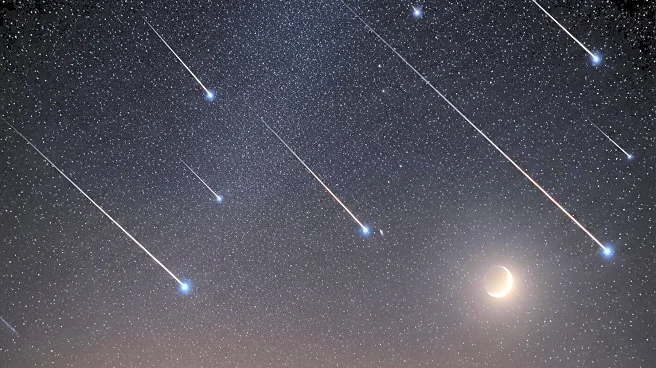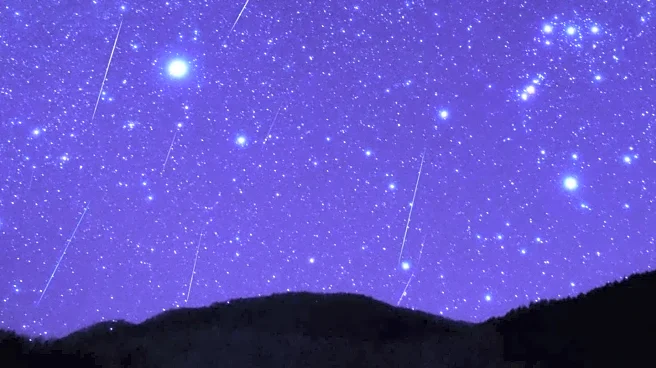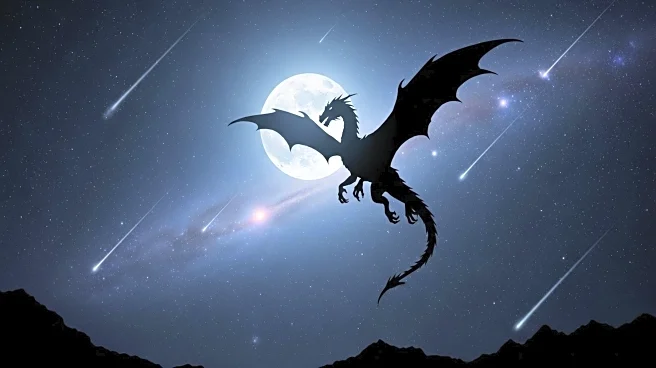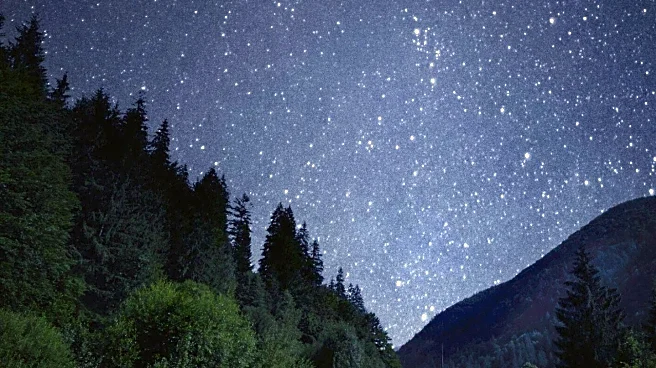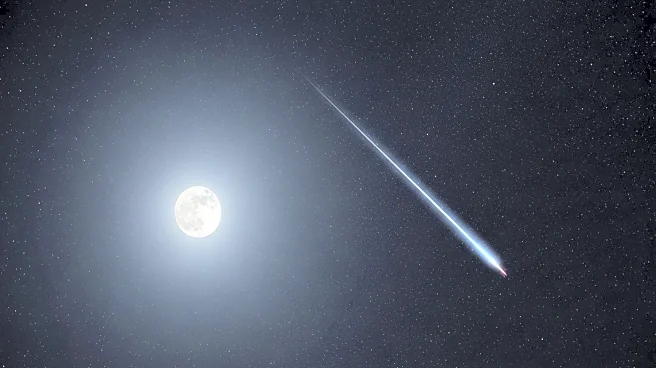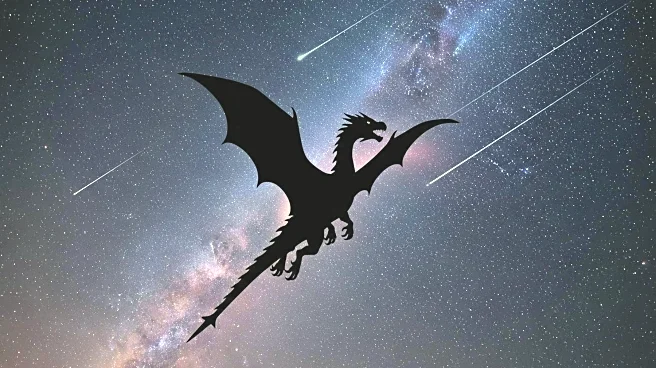What is the story about?
What's Happening?
The Delta Aurigid meteor shower is set to peak tonight, offering a chance to observe swift shooting stars despite the challenge posed by a waning gibbous moon. The shower is active from October 10 to October 18, with the peak occurring at 6 a.m. EDT on October 11. Meteors will appear to originate from the constellation Auriga, near the bright star Capella. The presence of the moon may make it difficult to spot fainter meteors, but under ideal dark sky conditions, up to two meteors per hour may be visible. The shower coincides with other active meteor showers, including the Southern Taurids and Orionids.
Why It's Important?
Meteor showers like the Delta Aurigids provide opportunities for skywatchers to connect with celestial events and appreciate the beauty of the night sky. Despite the moonlight challenge, observing meteors can be a rewarding experience, offering insights into the debris trails left by comets. The event highlights the importance of dark sky conditions for optimal viewing, emphasizing the need for efforts to reduce light pollution. Meteor showers also serve as practice runs for capturing celestial phenomena, encouraging amateur astronomers to hone their skills in astrophotography and observation.
What's Next?
Skywatchers are encouraged to observe the Delta Aurigid meteor shower in the predawn hours of October 11, when the radiant will be positioned high overhead. As the shower continues, enthusiasts may also spot meteors from other active showers, such as the Orionids later in the month. The event may inspire increased interest in meteor photography, with guides available for capturing these fleeting phenomena. The scientific community will continue to study meteor showers to understand their origins and trajectories, contributing to broader knowledge of celestial dynamics. Public engagement in skywatching activities may also increase, fostering appreciation for astronomy.
AI Generated Content
Do you find this article useful?
